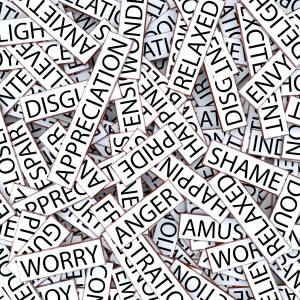What Does Color Have To Do With Your Logo?

Are you trying to pick the right colors for your logo? Are you worried about portraying the wrong image or using the wrong logo colors? Here is some information that can help you understand branding and color while designing your company logo color.
According to Psychology Today, while many attempt to categorize a customer’s emotional response to color, the truth is that each response is determined by the individuals’ personal experiences. Think about how you feel when you look at popular logos; do you have an emotional response to them? Maybe a memory comes to mind, good or bad, that connects you with the logo and company; a long summer night sitting around a bonfire drinking a particular brand of soda or the movie theater you went to on your first date with your significant other. Consumers are surrounded by logos and brands throughout the day that have been carefully designed to grasp their interest.
Each color has a category of expected emotional responses within the reader. Here are some of the feelings that can be associated with different colors:
Red – warmth, love, strength, energy, courage and passion.
Blue – professionalism, loyalty, peace, stability and reliability.
Yellow – comfort, hunger, intellect and happiness.
Black – sophistication, power, strength and elegance.
White – purity, peace, simplicity and cleanliness.
Green – durability, safety, honesty and freshness.
Purple – power, luxury, and elegance.
Orange – cheerfulness, enthusiasm, and affordability.
Color provides a non-verbal message to the consumer. One that is a complete interpretation for the reader based on their own memories and emotional states. However, this message can be guided by the meaning behind your company and your logo color. Ask yourself:
- What message do you want to portray about your company? (Example: Strength, freshness, and affordability)
- What does your company stand for? (Example: Loyalty, power, and passion)
Your image can now be applied to the colors representative emotional response. Take the emotions you found for each question and turn them into their respected colors. For example, strength = black, freshness = green, power = black, passion = red and loyalty = blue. You now have the color pallet to work with that will portray the message you are looking for.
The non-verbal emotional feelings of a logo can last for generations. From the stories your grandfather told you as a kid to the ones you tell your grandchildren. The memories that are developed by one person can provide a lifetime of customer loyalty within a family. For instance, do you only drive a certain make and model of a car? Where did these tendencies come from? Did your dad drive that Camry or Buick that you now have a newer model parked in your driveway?
Your loyalty to a brand is stemmed from stories and experiences with that specific company and their goods. The beginning of customer loyalty starts with the right image and message to grasp your interest, and that means having the right logo color for your company logo based on the message you want to convey.
Resources:
Ciotti, G. (2014, August 20). Color Psychology: How Colors Influence the Mind. Retrieved from Psychology Today: http://www.psychologytoday.com/blog/habits-not-hacks/201408/color-psychology-how-colors-influence-the-mind

